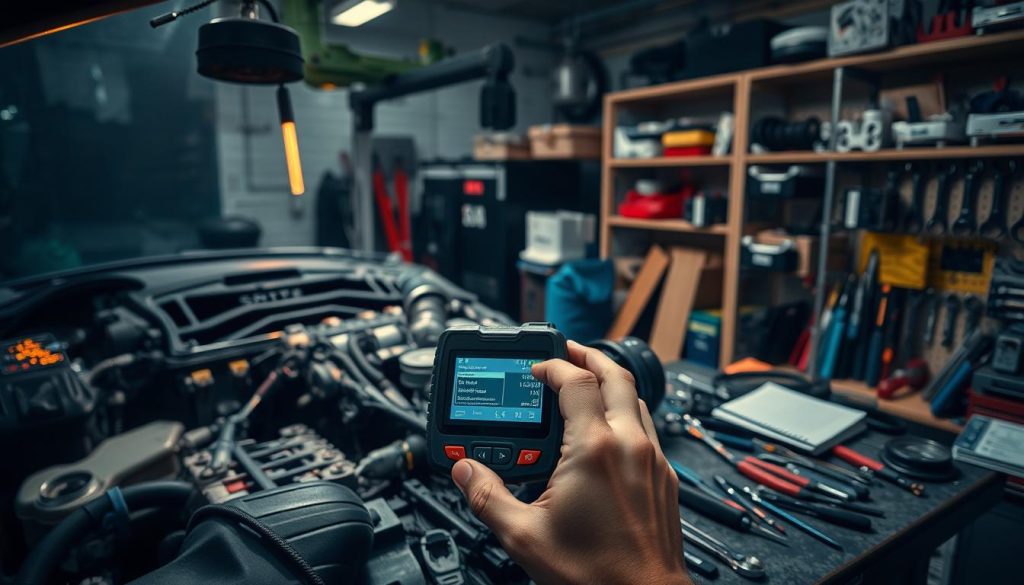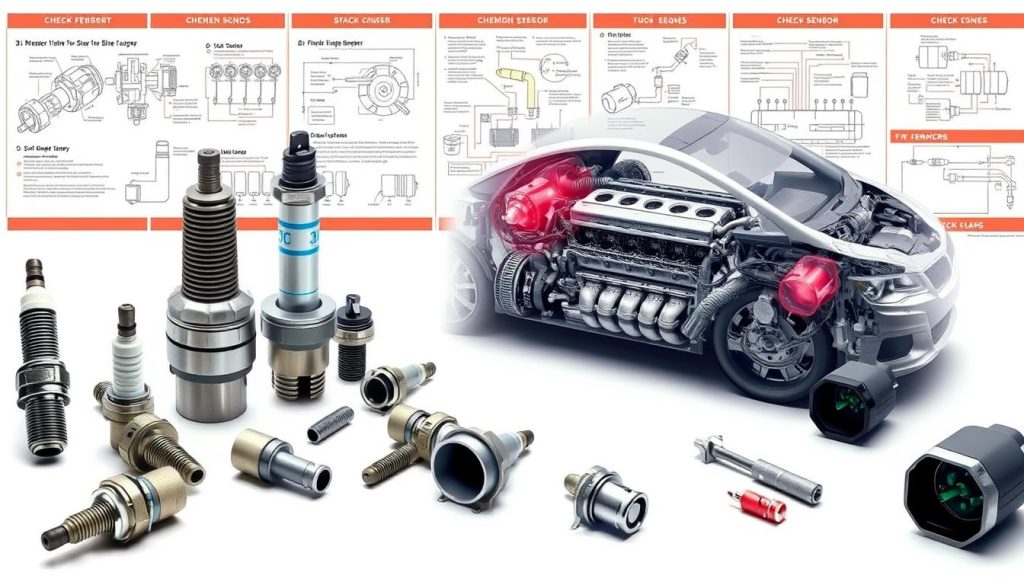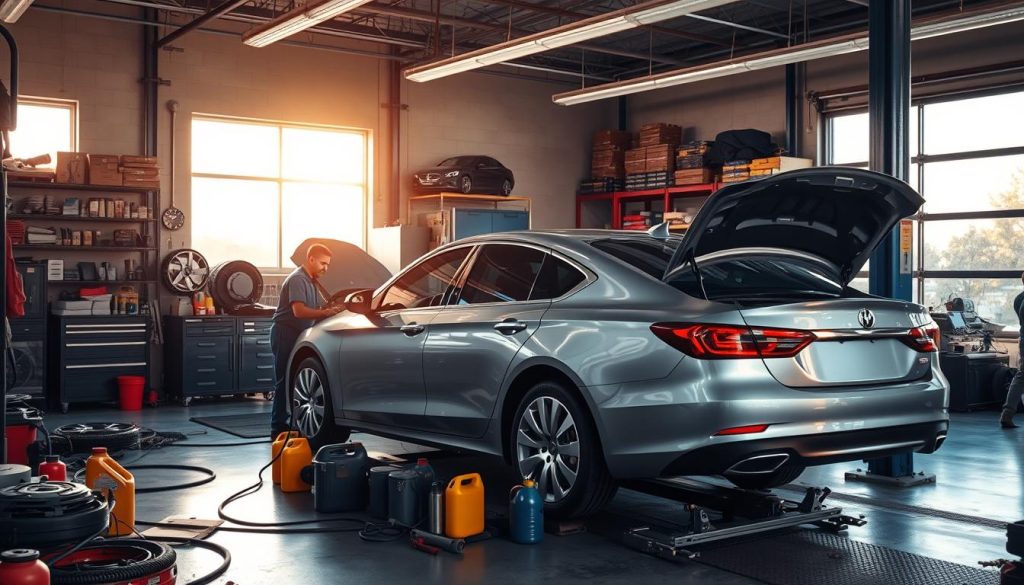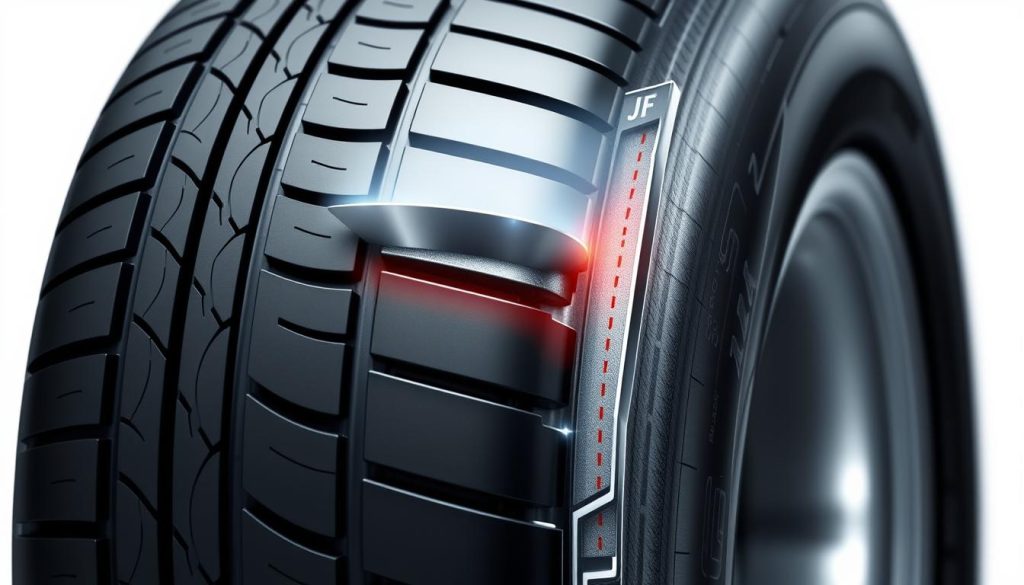The check engine light is a warning from our car’s computer. It tells us there might be a problem with the engine. If we ignore it, we could face big issues like bad fuel use, more pollution, and expensive fixes. It’s very important to know what the light means and fix it fast to keep our cars running well.
In this article, we’ll talk about what the light means, how to fix it, and how Heaven Automotive can help. By fixing problems early, we can save money and time.
Key Takeaways
- Understanding the check engine light can prevent serious vehicle issues.
- Prompt action may reduce repair costs by up to 50%.
- Regular engine diagnostics can enhance vehicle longevity.
- A loose gas cap is one of the most common triggers.
- Ignoring the light can lead to engine damage over time.
Understanding the Check Engine Light’s Warning Signals
The check engine light is very important. It tells us if our car has a problem. It can be confusing, but knowing what it means helps us fix it.
About 20% of cars have this light on. This shows how key it is to understand its signals.
What Does the Check Engine Light Indicate?
The light can mean many things. It might be something simple like a loose gas cap. Or it could be a bigger problem like a bad oxygen sensor.
A loose gas cap can waste fuel and pollute more. But a flashing light means a big problem that needs fixing fast.
Common Reasons for the Light to Activate
Knowing why the light comes on helps us fix it. Some common reasons include:
- Faulty oxygen sensors, which can make fuel go down by 40% if not fixed.
- Engine misfires, often from bad ignition coils or spark plugs. This can cut performance by 25-30%.
- Issues with the catalytic converter, which usually lasts 10 years or 100,000 miles. Its failure can turn on the light.
Knowing these problems helps us decide how to fix our car. If the light stays on or flashes, we should get help fast. This prevents more damage and expensive fixes.
DIY Troubleshooting Before Visiting a Mechanic
The check engine light worries many drivers. Before we see a mechanic, we can do some basic checks. These steps can find simple problems and save us from extra visits.
Basic Checks You Can Perform
First, check the gas cap. A loose or broken cap can turn on the check engine light. It affects the car’s vapor system. Also, look at the gauges for signs of overheating or low oil.
- Check gas cap for tightness and damage.
- Inspect gauges for overheating and oil pressure.
- Listen for unusual noises from the engine.

When to Seek Professional Help
If simple checks show ongoing problems or a flashing light, get help fast. A flashing light means a big issue that needs quick fixing. A local shop like Heaven Automotive can do detailed checks and fix your car.
Ignoring these signs can lead to big problems and expensive fixes. It’s better to fix small issues early to avoid big costs later.
The Importance of Diagnostic Scans
Diagnostic scans are key to finding why a check engine light comes on. An OBD-II scanner connects to the car’s computer. It shows us trouble codes that tell us what’s wrong, like bad sensors or engines that don’t work right.
Regular checks can stop small problems from getting big. They also help your car last longer.
How Diagnostic Scanners Work
Using an OBD-II scanner is easy but very helpful. We plug it into the car’s special port under the dashboard. It talks to the car’s computer and gets trouble codes.
These codes tell us about problems, like a bad mass airflow sensor. This can make your car use more gas. Knowing these codes helps fix problems early.
Interpreting Diagnostic Trouble Codes (DTCs)
After getting trouble codes, we need to understand them. Each code means something different. But, it takes skill and knowledge to know what they say.
For example, a code for the catalytic converter can mean your engine works 50% less if not fixed. Experts at Heaven Automotive use these scans to find and fix problems. Knowing and acting fast can save a lot of money.
Common Causes of a Check Engine Light
Knowing why a check engine light comes on helps us fix problems early. Faulty oxygen sensors and engine misfires are big reasons. We need to watch for these signs to keep our cars running well.
Faulty Oxygen Sensors
Faulty oxygen sensors cause about 20% of check engine light problems. They help with fuel use and emissions. If they go bad, gas mileage drops a lot, sometimes by 40%.
Fixing these sensors helps the car use fuel better and cuts down on pollution.
Loose or Damaged Gas Caps
A loose or broken gas cap is behind nearly 30% of check engine light issues. If the cap isn’t tight, the engine gets the wrong mix of fuel and air. This is an easy fix that keeps bigger problems away.
Engine Misfires and Ignition System Issues
Engine misfires and ignition problems cause about 15% of check engine light problems. Issues with spark plugs or coils make starting hard and hurt engine power. Not fixing these can lead to bigger problems.
Regular checks and maintenance help avoid these issues. This keeps our cars running well.

The Role of Your Vehicle’s Onboard Computer
The onboard computer, or Engine Control Unit (ECU), is key for your car’s best performance. It watches many things to keep the engine running well and clean. It checks data from sensors and fixes problems fast, telling you if something’s wrong.
How the ECU Monitors Engine Performance
The ECU makes sure your car runs strong but also saves fuel. It looks at sensor data like oxygen levels and temperature. It changes the fuel mix to keep the engine running right.
If it finds a problem, like bad voltage from the oxygen sensor, it turns on the check engine light. This tells you to check it out.
What Happens When a Fault is Detected
When the ECU finds a fault, it saves a code to help fix it. Ignoring these warnings can cause bigger problems. It can hurt your car’s performance and how well it runs.
A steady check engine light means it’s not too bad. But a flashing light is a big warning. It means you need to check it right away. Not fixing it fast can make things worse and cost a lot to fix.
Consequences of Ignoring the Check Engine Light
Ignoring the check engine light can cause big problems for our cars. The first warning might seem small, but ignoring it can lead to big damage. This damage can cost a lot to fix. Knowing these risks helps us take care of our cars better.
Potential Damage to Your Vehicle
When we ignore the check engine light, our cars are at risk. Common problems can cause:
- Engine misfires that may lead to overheating.
- Increased wear on engine components, potentially culminating in complete engine failure.
- Expensive repairs that could exceed $1,000, if problems get worse and involve important parts like the catalytic converter.
A car with ignored check engine light issues might not pass emissions tests. This can stop you from legally driving and registering your car. You could face fines or penalties, adding to the cost of ignoring these warnings.
Impact on Fuel Efficiency
Ignoring the check engine light hurts our fuel efficiency a lot. Studies show fuel economy can drop by up to 40% with ongoing issues. Faulty sensors and misfires waste fuel and increase emissions, hurting our cars’ performance.
Fixing these problems quickly helps avoid high costs and keeps our cars running well. It also helps the environment by reducing harmful emissions. Taking action on the check engine light helps our cars last longer and improves our driving experience.
Preventive Maintenance Tips
Preventive maintenance helps our cars run better and last longer. Regular checks and quick fixes can stop big problems. A well-kept car means better driving and peace of mind.
Regular Engine Checks and Fluid Changes
Regular engine checks can add thousands of miles to our cars. Changing the air filter yearly keeps our cars running well. We should check engine oil every month and add more if needed.
- Regular inspections are recommended at least once a year to avoid unexpected breakdowns.
- Spark plugs should be replaced every other year or according to the owner’s manual.
- Addressing minor issues early can save us up to 30% on future repair costs.
Importance of Timely Repairs
Fixing problems quickly is key to our car’s health. Ignoring the check engine light can cost a lot. Preventive care is cheaper and stops big problems.
- Regular maintenance can improve fuel efficiency by up to 15%, saving us on fuel costs.
- Planned maintenance inspections can take only a couple of hours, minimizing disruption to our daily schedules.
- Approximately 70% of vehicle owners feel less stressed about reliability when following a maintenance schedule.
Final Thoughts on Dealing with Check Engine Light Issues
Understanding the check engine light is key to keeping our cars running well. Knowing when to get help from a mechanic can prevent big problems and save money. A loose gas cap is easy to fix, but serious lights need a mechanic fast.
Knowing When to Head to the Mechanic
A steady orange or yellow light means a small issue. But a flashing light means you need to act fast. Don’t ignore a check engine light that keeps coming on. It could cause big damage later.
Free OBD-II scans at auto parts stores can help figure out the problem. This can save you a trip to the mechanic.
Keeping Your Vehicle Healthy for the Long Haul
Regular car checks are important to avoid surprises. Things like oil changes and spark plug checks can stop the check engine light. Fixing small problems early keeps your car running well and saves fuel.
If you’re unsure, call experts like Heaven Automotive. They’ll keep your car in top shape.



